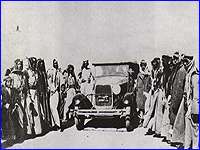History Of Arab Cultural Capital [ Kuwait ]

Kuwait, or officially the State of Kuwait, was referred to by the name "Qurain" (or Grane) in the early seventeenth century. The names "Qurain" or Kuwait are diminutive of the Arabic words Qarn and Kout. Qarn is a high hill and Kout is a fortress.
The Danish traveller C.Neibuhr depicted Kuwait as Grane on his map and in the narrative about his voyage made in 1765. Kuwait was known by the name Grane under the rule of Sheikh abdallah Bin Sabah, the second ruler of Kuwait (1762-1812). Several places in southern Kuwait still bear the name Grane (Qurain).
Kuwait has a history of over 250 years of existence as an independent political entity.
In the 17th century the Bani Khalid were the rulers of Eastern Arabian peninsula and their domain stretched from Kuwait down to Qatar.
In the middle of the 17th century the 'Utub' tribe comprising of several major tribe of Anaza, such as Al-Sabah , Al-Khalifa, Al-Zayed, Al-Jalahima and Al-Muawida migrated from Najd, a place in central Arabian peninsula at that time.
Disputes over succession after the death of Saidun bin Muhammed bin Ghurair Al-Hamad in 1722 gave the Utab some form of local government.
In 1756 Sabah bin Jaber was chosen by the inhabitants of Kuwait to
administer justice and the affairs of the town.
Oldest City Gate, Kuwait
Airport -1934

The Amir's Car&Body
Guard-1920

